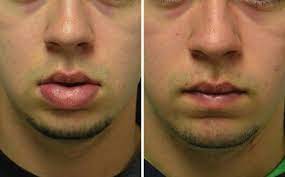Types and Methods Of Liposuction
LIPOSUCTION TYPE:
1) LIPOSUCTION OF TUMESCENTS:
A few liters of saline solution containing epinephrine, a vessel-constricting agent, and a local anesthetic known as lidocaine are pumped into the skin area that will be suctioned. Fat is sucked in by tiny suction tubes. The most common type of liposuction is this one.
2) LIPOSUCTION DRY:
Because no local anesthetic is injected into the fat prior to the procedure, Dry Liposuction is referred to as such. In fact, 30% of the blood was present in the tissue that was removed through dry liposuction. Due to the increased risk of bleeding and bruising, this method is now rarely utilized.
3) LIPOSUCTION IN WATER:
Regardless of the area being treated or the amount of liposuction performed, this method only uses general anesthesia on the patient. The solution that is injected restricts the capillaries, preventing patients from bleeding. The patient's blood actually makes up 15-20% of the tissue that is removed through wet liposuction. Patients still face a significant risk as a result of this amount of blood loss, which occasionally necessitates blood transfusions. Despite the fact that wet lipo is safer than dry lipo, it is still regarded as risky due to the loss of blood.
4) SUPERIOR LIPOSUCTION IN WATER:
Similar to tumescent liposuction, which involves injecting a solution into the surgical site, the Super Wet Liposuction or Lipoplasty technique uses less fluid and takes less time to complete. Lidocaine, a blood vessel constrictor (epinephrine) that helps stop bleeding, and salt water are in this fluid. After injecting the solution, the surgeon inserts a cannula, a suction tool, to remove the patient's requested area of body fat.
LIPOSUCTION METHOD:
1) LIPOSUCTION BY HAND:
By moving the cannula back and forth and rotating it, manual liposuction breaks down connections between fat cells to form a fat layer.
2) ULTRASOUND ASSISTED LIPOSUCTION, or UAL:
The technique of ultrasonic liposuction, also known as ultrasound assisted liposuction, uses sound waves to gently loosen the fat. Here, the Ultrasound energy is utilized to soften fat and this fat is then eliminated by a dainty cylinder called cannula. The rapid vibration of the cannula is caused by the ultrasound energy's energizing effect. The fat cell walls are punctured by the ultrasound vibrations. The fat will emulsify as a result, making suctioning them simpler. Using this method to get rid of fat makes it easy to perform liposuction on areas with more fat and more volume.
An ultrasound cannula or a special emitter can be used to deliver the ultrasound either above or below the skin's surface.
There are 2 kinds of Ultrasound cannulae:
1) A robust probe
2) A probe with a hollow core.
A standard, suction-type cannula is used to remove the solid probe's emulsified fat and tumescent solution beneath the skin. Both emulsifying and removing fat are performed by the hollow core.
The UAL technique works well for fibrous areas like the male breast, back, and areas where liposuction has been done before.
VASER : This is the fourth generation of the UAL technology, which has fixed some of the issues it had before. Both a continuous and a pulsed mode are available, and the amount of energy that is delivered to the tissues is approximately one quarter that of previous models. Additionally, it reduces heat generation.
3) PAS, or power assisted liquidation:
A special, motorized cannula with a mechanized system is used in the Power Assisted Liposuction technique. Over a distance of 3 to 5 millimeters, the cannula moves back and forth very quickly. Because it removes 40% more fat in a minute than manual liposuction does, this method requires less time to perform while still producing the same results as ML. Usually used by plastic surgeons as they get older to make themselves and their joints feel less tired.
4) LIPOLYSIS WITH LASER ASSISTANCE (LAL):
This technique, also known as laser guided lipo, uses the power and technology of medical laser beams to melt fat. It utilizes a variety of cannulae to extract the dissolved fat from the area being treated, combining laser beam and adipocyte disruption. The yttrium aluminum garnet with neodymium doping (Nd: The first laser for lipolysis has been introduced as the YAG) 2064 mm



Comments
Post a Comment